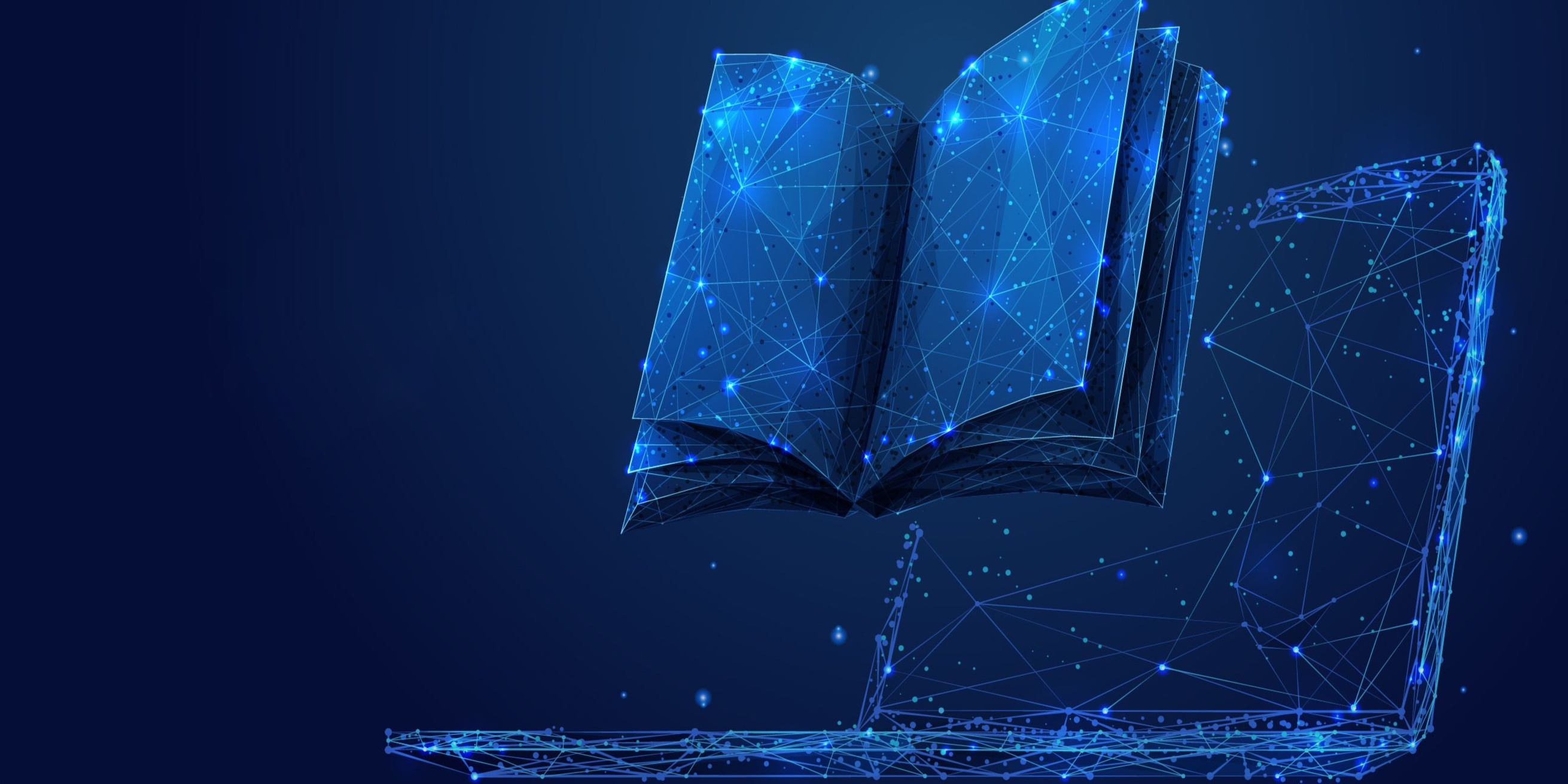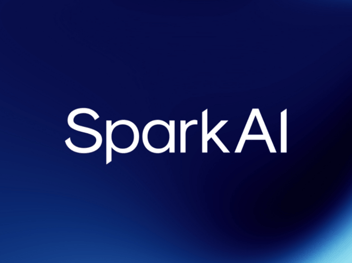AI/ML/CV Glossary

Building great AI can be difficult. But that doesn’t mean that talking about it should be. That’s why we created this glossary of key artificial intelligence, machine learning, and computer vision terms. Whether you’re focused on building your own automated system or just trying to understand tech sector headlines, we hope this resource helps.
*Note: Some of these technical terms can be incredibly expansive and/or used differently in different contexts. The following definitions are how we use these terms at SparkAI, within the context of computer vision and edge case resolution.
A | B | C | D | E | F | G | H | I | J | K | L | M | N | O | P | Q | R | S | T | U | V | W | X | Y | Z
A
Algorithm - Sets of instructions that instruct computers on how to execute a task.
Annotating - Labeling data which can be used in the training of AI models. Data is annotated with information that describes and helps categorize the data based on the heuristics that the programmer wants models to be able to categorize. Used interchangeably with labeling or tagging.
API - Short for "Application Programming Interface," a piece of software that connects two distinct applications. SparkAI's API connects robots in the wild to our network of mission specialists and proprietary machine learning tools, both of which help provide crucial context needed to resolve edge cases.
Artificial intelligence (AI) - A branch of computer science concerned with machines that demonstrate cognitive functions usually reserved for humans, such as an ability to make decisions, recognize patterns, and/or derive sophisticated insights from large amounts of data.
B
Back-propagation - A process where an algorithm begins at the solution to a problem and works backward to discover the conditions of the original world in which the solution was devised.
Bias - The difference between a model’s average prediction and the average actual outcome. (How different a model’s predictions are from the real world.) ML bias is difficult to overcome in part because AI can not generalize in the way that humans can. Thus, to prepare an ML model for a circumstance, it must first train on or encounter data that mirrors the circumstance. Finding truly expansive and representative datasets remains a challenge.
Bias Variance Tradeoff - The inherent inverse relationship in model training that reducing bias of results also increases variance of results across different datasets. One of the goals of model training is finding an effective balance between bias and variance to create generalizable results that still generate useful analysis and resemble the real world.
Bounding Box - In computer vision, a rectangle drawn within an image to isolate a component for further analysis.
C
Classifier - A type of machine learning algorithm that separates different data points into discrete categories. In computer vision, a classifier helps categorize objects into different groups representing different types of objects and label them accordingly.
Clustering - A machine learning task used in unsupervised learning to identify patterns in a dataset by grouping – or "clustering" – similar inputs and analyzing the resultant characteristics.
Computer Vision - A branch of artificial intelligence that enables computers to extract information and insights from images and other visual stimuli.
Convolutional Neural Network (CNN) - A neural network architecture used to process pixel data. CNNs can combine components like pixels together to generate deeper insights on a series of pixels.
Credit Assignment Problem - The challenge in machine learning (particularly neural networks) of identifying which component of a network had the greatest explanatory power in reaching a decision. It is integral to reinforcement learning, as credit assignment helps determine which neurons require more or less weight.
Critical Path - The components of a system whose success are necessary for the system to operate. If any component within a system’s critical path fails, the whole system fails.
D
Data Collection - The process of gathering data – from the real world, simulation, or otherwise generatively – for the purpose of training an AI model.
Decision Tree - A decision-making model that solves problems by breaking down questions into smaller component questions parts and following different “branches” of the tree to the solution depending on the answers to the component questions. For instance, in image categorization, decision trees would ask questions about whether an image has certain attributes or features that become more and more granular as the items within a branch look more similar to each other.
Deep Learning - A branch of machine learning that employs neural networks to generate deeper insights. By running datasets through multiple layers of neurons that focus on different facets of a dataset, these neural networks are able to discover patterns that are unnoticeable to any human. Deep learning thus enables us to generate new insights we otherwise could not access.
E
Edge Cases - Instances where an AI application cannot provide a prediction or make a decision with the confidence level that was defined as the acceptable threshold. Edge cases are often real-world scenarios that deviate from the normal — either not accounted for during model training or not well represented in training — making them difficult to impossible to incorporate into the model training process.
Edge Case Resolution - Intervention into an AI system to provide clarity on edge cases that the system itself could not confidently identify by offering additional context or differentiating between potential classifications for the scenario.
Exceptions - A catch-all term for states where computer vision models have low confidence in, or make errors in, their predictions. These include edge cases, false positives, false negatives, and can also extend to circumstances that don’t pertain to the AI model (such as dust on a camera obstructing vision.)
Exception Resolution - Processes through which AI systems gain clarity on exception states they otherwise could not accurately categorize and resolve.
Extraction - A process that involves categorizing data within an unstructured dataset, making it sufficiently structured to be usable by many machine learning techniques.
F
False Negatives - Cases when an AI application does not categorize an object into a category, even though it belongs to that category. (This is contrasted with false positives, which are instances when an AI application incorrectly categorizes an object into a measured category when it does not belong to that category.)
False Positives - Instances when an AI application incorrectly categorizes an object into a measured category when it does not belong to that category. (This is contrasted with false negatives, which are cases when an AI application does not categorize an object into a category, even though it belongs to that category.)
Forward Chaining - A machine learning inferential model that begins with the existing data and makes inferences based on the data available to reach an end goal.
G
Gradient Descent - An optimization process often used to improve neural network performance. The process frequently involves minimizing the loss (cost of the loss function) of a network in its attempt to satisfy its objective.
Ground Truth - Information held as “true” in the machine learning process. In machine learning, ground truth refers to scenes of the real context which an algorithm navigates. (They are often labeled. They can represent reality, although they do not necessarily do so if the data has errors.) Ground truth can be used to test a model by seeing how the model performs on ground truth.
H
Human-in-the-Loop - A system where humans provide input to a machine learning model. Such input can occur during the model development process in training (by labeling data) or tuning (by scoring model performance), as well as during deployment as a long-term part of the system. Sometimes abbreviated HITL or HTL, a human-in-the-loop can help resolve edge cases or exceptions. SparkAI's mission specialists exemplify the power of human-in-the-loop systems to unlock new AI possibilities by resolving edge cases in real time and enabling deployment of new AI products.
Hyperparameter Tuning - Also known as hyperparameter optimization, the creation and adjustment of the constraints within which the training process will occur. These hyperparameters — established before the training process — then constrain the set of outcomes within which a model's outcomes can occur.
I
Image Enrichment - The process of a machine learning program adding metadata — additional details about an image spanning from information about the photographer to text descriptions — to an image. Humans-in-the-loop can feed and augment ML in this work.
Image Recognition - A type of computer vision that describes an image with one broad description as opposed to isolating discrete elements within the image. (Contrasted with image segmentation.) Humans-in-the-loop can feed and augment ML in this work.
Image Segmentation - A type of computer vision that subdivides an image into smaller components that can then in turn be categorized. (Contrasted with image recognition.) For instance, segmenting the pixels of an image of a city street into more legible items like a drivable surface, sidewalks, sky, buildings, trees, and non-stationary obstacles. Humans-in-the-loop can feed and augment ML in this work.
L
Labeling - See annotation.
M
Machine Learning (ML) - A subfield of artificial intelligence focused on building algorithms and systems that can independently solve problems (and independently refine their own processes) when deployed without explicit human direction or programming of rules.
Machine Vision - A system featuring both computer vision capabilities and a machine "body" that can execute tasks. Examples of machine vision systems include drone systems that monitor crop yields.
Model - In AI, a program that utilizes decision-making algorithms to solve problems. Models can have varying levels of sophistication, depending on the complexity of, among other things, the algorithms that construct them, the data on which the model is trained, and the problem it is trying to solve.
N
Neural Network - A neural network is a type of machine learning model built on a large number of "neurons" that each focus on different characteristics of an input in order to make a decision. Different neurons in the neural network have different adjustable "weights'' of importance in how much an algorithm relies on different data points to reach a final decision. Deep learning relies on neural networks.
O
Optical Character Recognition (OCR) - In computer vision, the ability for computers to translate handwritten text in images into their character counterparts, making them more legible as data inputs.
Overfitting - When a model is trained to adhere too tightly to the unique patterns and eccentricities of its training data, to the point that it becomes unable to accurately predict more generalizable trends on data beyond the training set. Engineers prevent overfitting by testing models with validation data.
P
Pre-Trained Model - A model designed by someone else and repurposed by a new user, likely to accomplish a similar yet distinct objective from the prior user's goal. Pre-trained models often require tuning to fit the parameters to the new user's desired objective.
Precision - An assessment of a categorization model measured as the number of correctly identified objects in a category divided by the sum of correctly identified objects and false positives. Precision describes how many of the objects a model identifies as part of a category are actually a part of that category.
Precision-Recall Curve - The tension that increasing a model’s precision can decrease its recall, and vice versa. One way to improve precision is to decrease false positives by categorizing fewer items into the class. However, this can decrease recall if it excludes more members of the category. One way to improve recall is to decrease false negatives by categorizing more items into the class. However, this can decrease precision if it includes more items that do not belong in the class.
R
Recall - An assessment of machine learning categorization measured by the number of correctly identified objects divided by sum of true positives and false negatives. Recall describes how many of the objects that were supposed to be identified as a given class were correctly identified in that class.
Reinforcement Learning - The process in machine learning by which an algorithm learns how to optimize its performance for a desired task. In reinforcement learning, an algorithm optimizes its function by trying to maximize the amount of reward it receives, with reward defined by a system architect. It is one of three main types of machine learning paradigms, alongside supervised learning and unsupervised learning.
Relevancy - A measure of how well an AI-selected solution addresses the query or question the model was presented. (I.e. how "relevant" to the question asked is the presented solution?)
S
Service Level Agreement (SLA) - An agreed definition detailing the services a provider promises to provide to a customer and the amount of time within which a provider promises to provide the service in response to a user's request.
Structured Data - Data that is easily read and understood by machine learning tools, often because it is rigorously organized. (In business contexts, structured data is often managed by SQL.)
Supervised Learning - Machine learning training on labeled datasets, which provide the model with signals about its accuracy and, in turn, show how the model needs to adjust.
Synthetic Data - Data generated artificially. Synthetic data is contrasted with data that is obtained through external stimuli and measures of real-world events.
T
Tagging - See: Annotation.
Test Data - Data, distinct from training set data, used to assess the bias and variance of a model. (Test data is necessary because the only way to test a model's bias, variance, and/or generalizability in the real world is to expose it to data beyond the training data.)
Training - In AI, training is the process by which a model learns how best to perform its task by testing its solutions over many iterations.
Transfer Learning - The process of tailoring and reapplying parts of a pre-trained model to a new context to address a new problem.
U
Underfitting - A phenomenon in which a machine learning model is not complex enough to generate helpful insights about the world. Simple functions like linear functions (lines) often underfit ground truth because they do not sufficiently represent the real world. Underfitting emerges when a model does not engage sufficiently with the specific nuances of the training data, instead taking too general an approach in its classification task. Engineers test underfitting with validation data.
Unsupervised Learning - Machine learning training on unlabelled datasets. In unsupervised learning, models differentiate between data points and analyze datasets through tools like clustering similar data points and uncovering patterns.
V
Validation Data - Data, distinct from training data, used to test a new model's performance. It is frequently deployed to see if overfitting or underfitting occurred in the training process.
Variance - Colloquially, a description of how much a model’s outputs vary based on the data it is presented. Models with high variance have very different results based on the data they are presented, often meaning that they do poorly when asked to predict datasets that are different from their training set.


